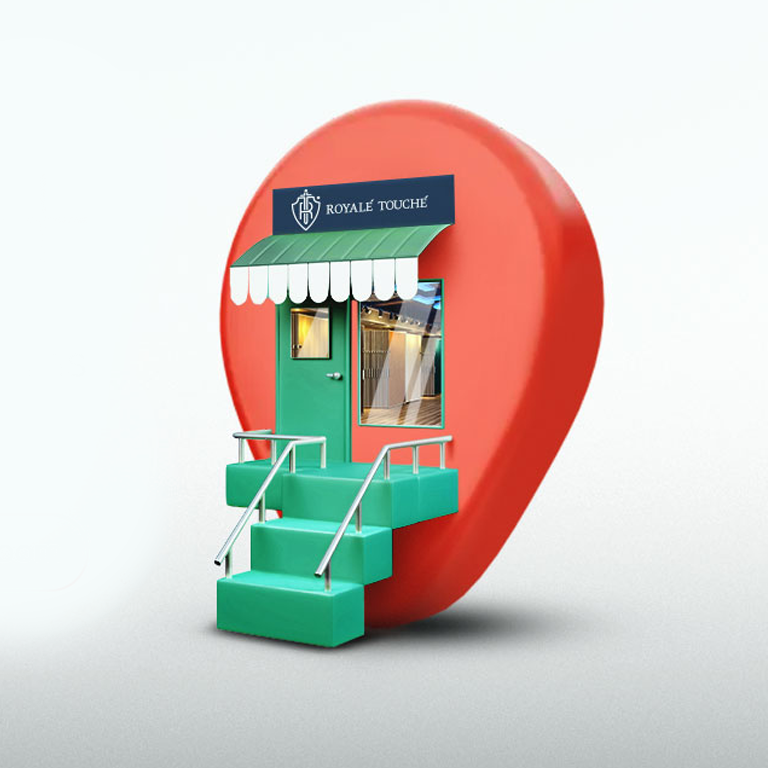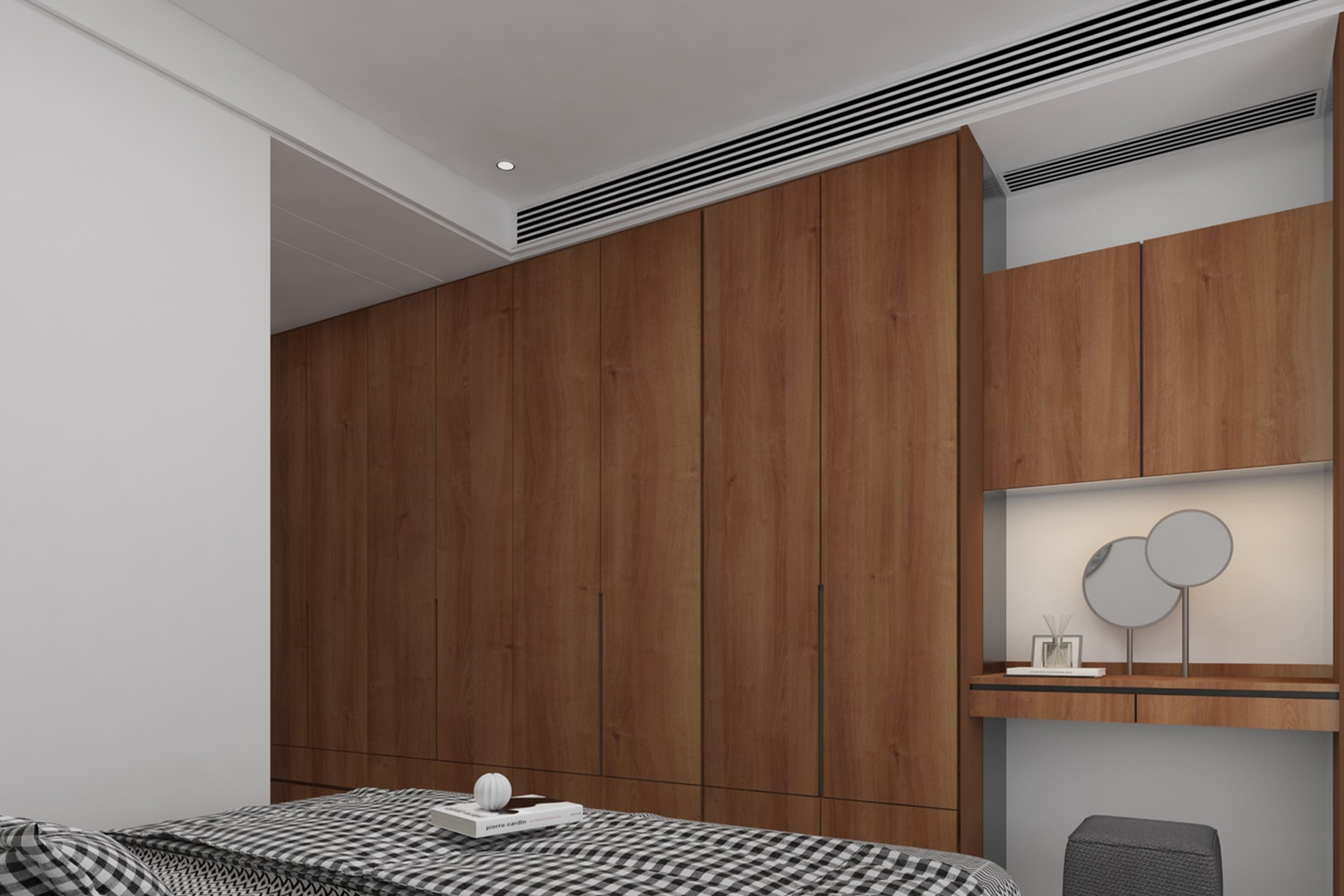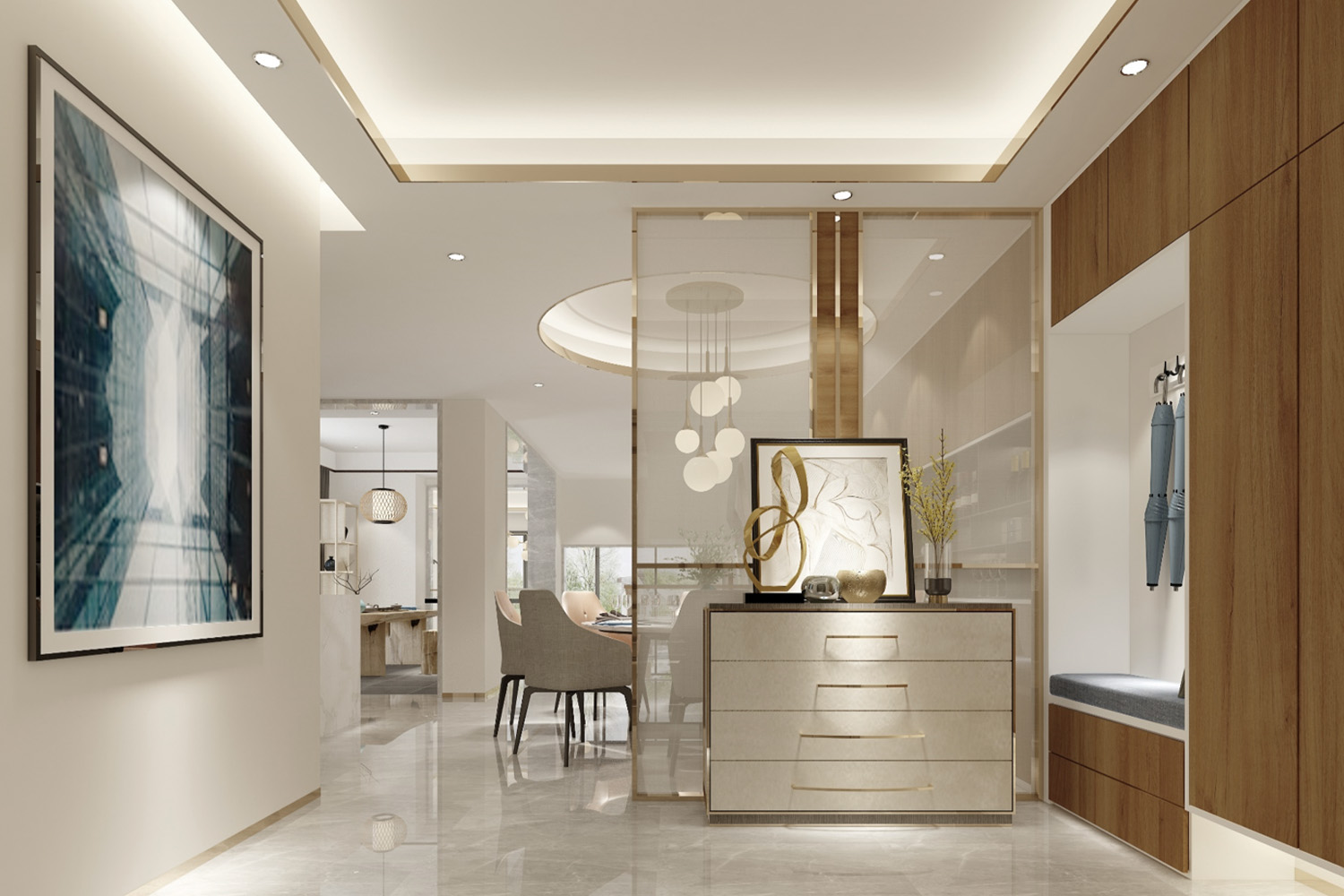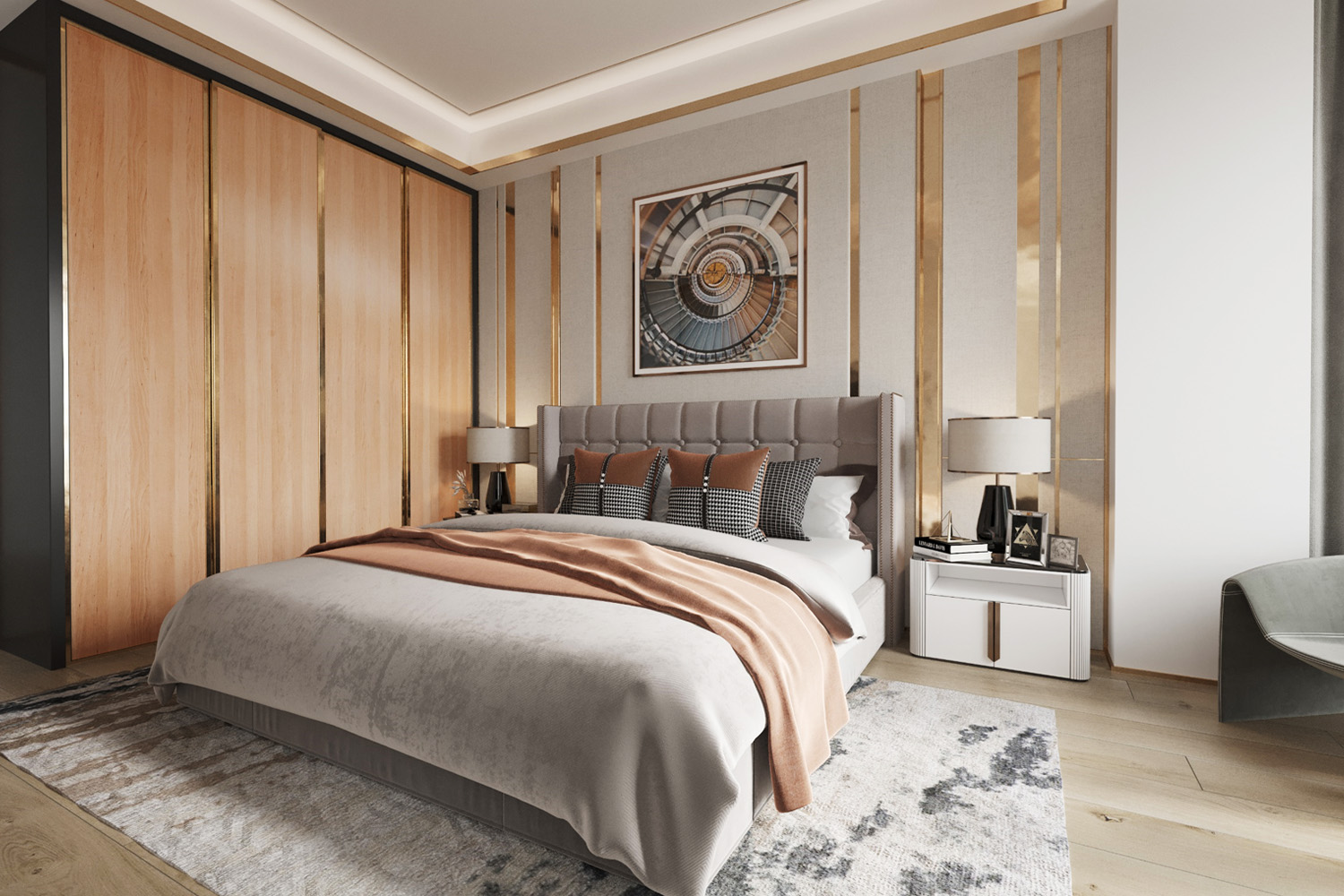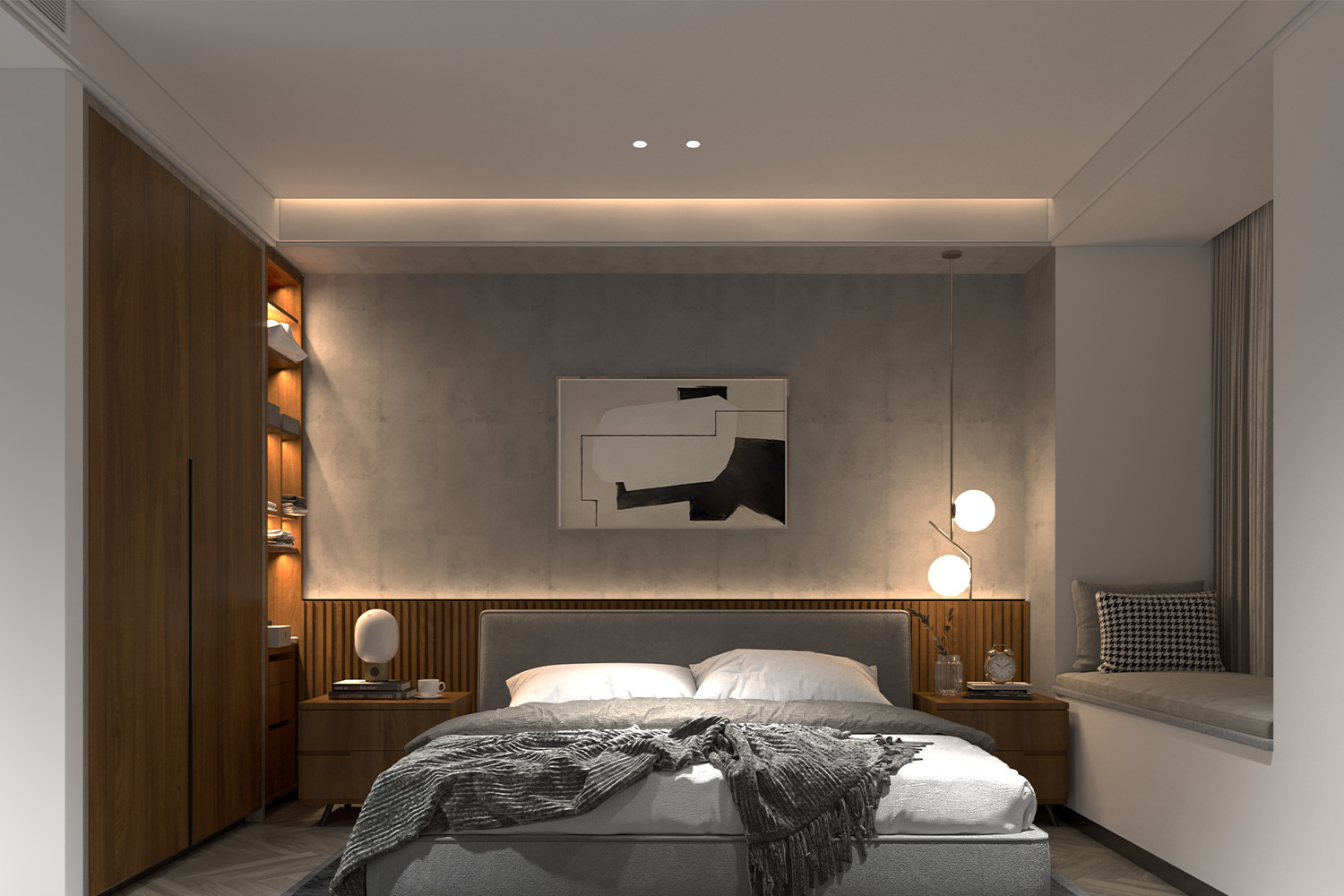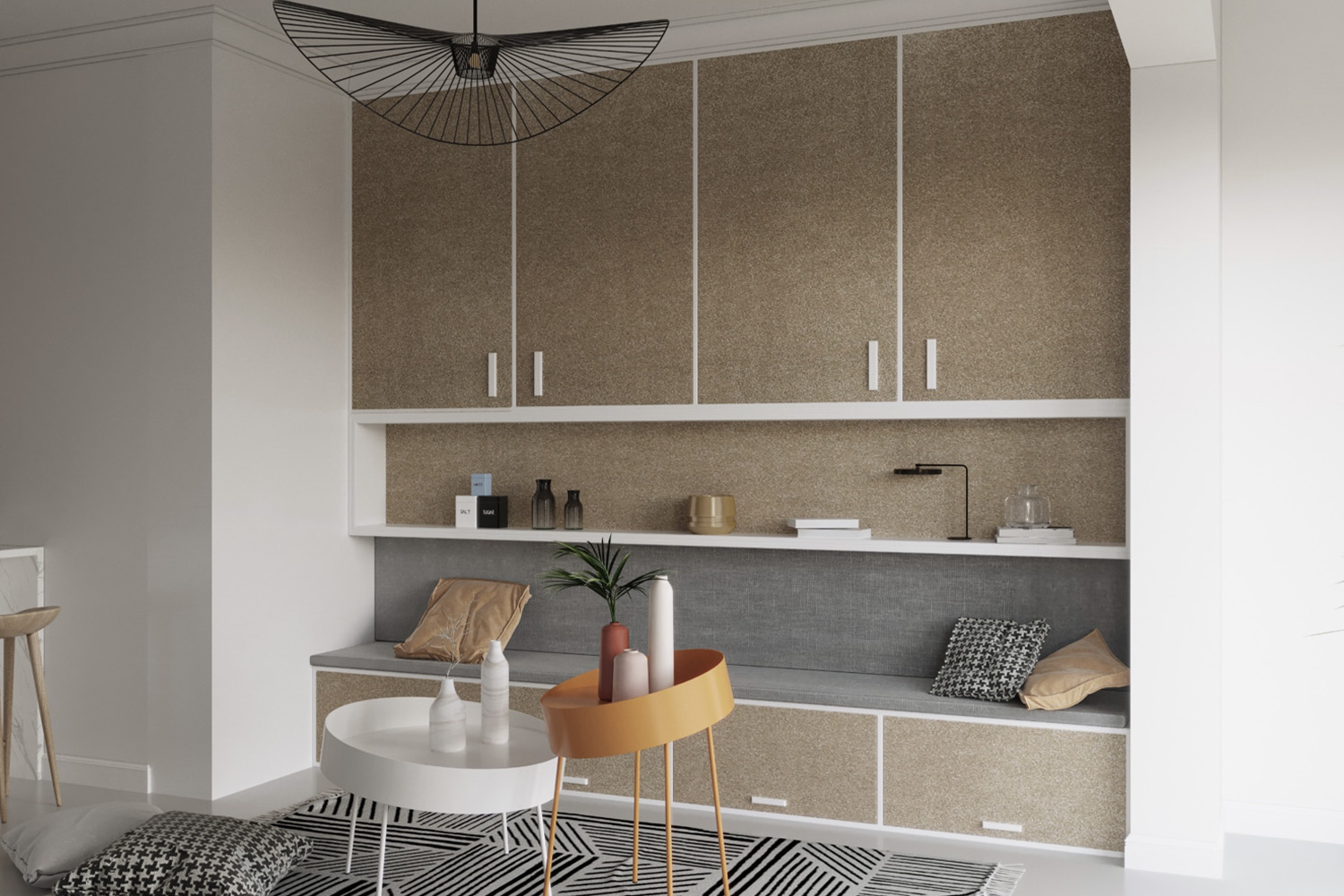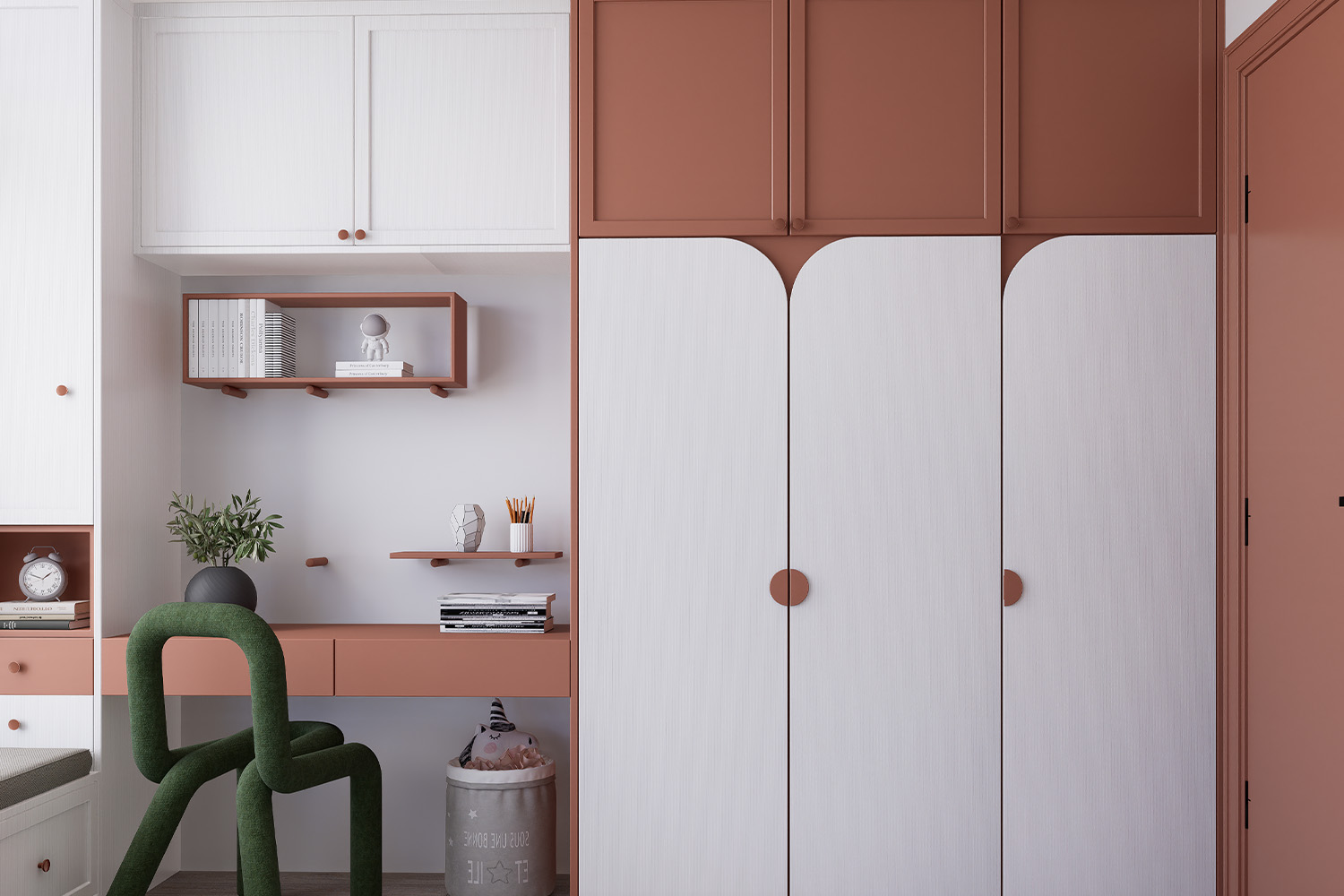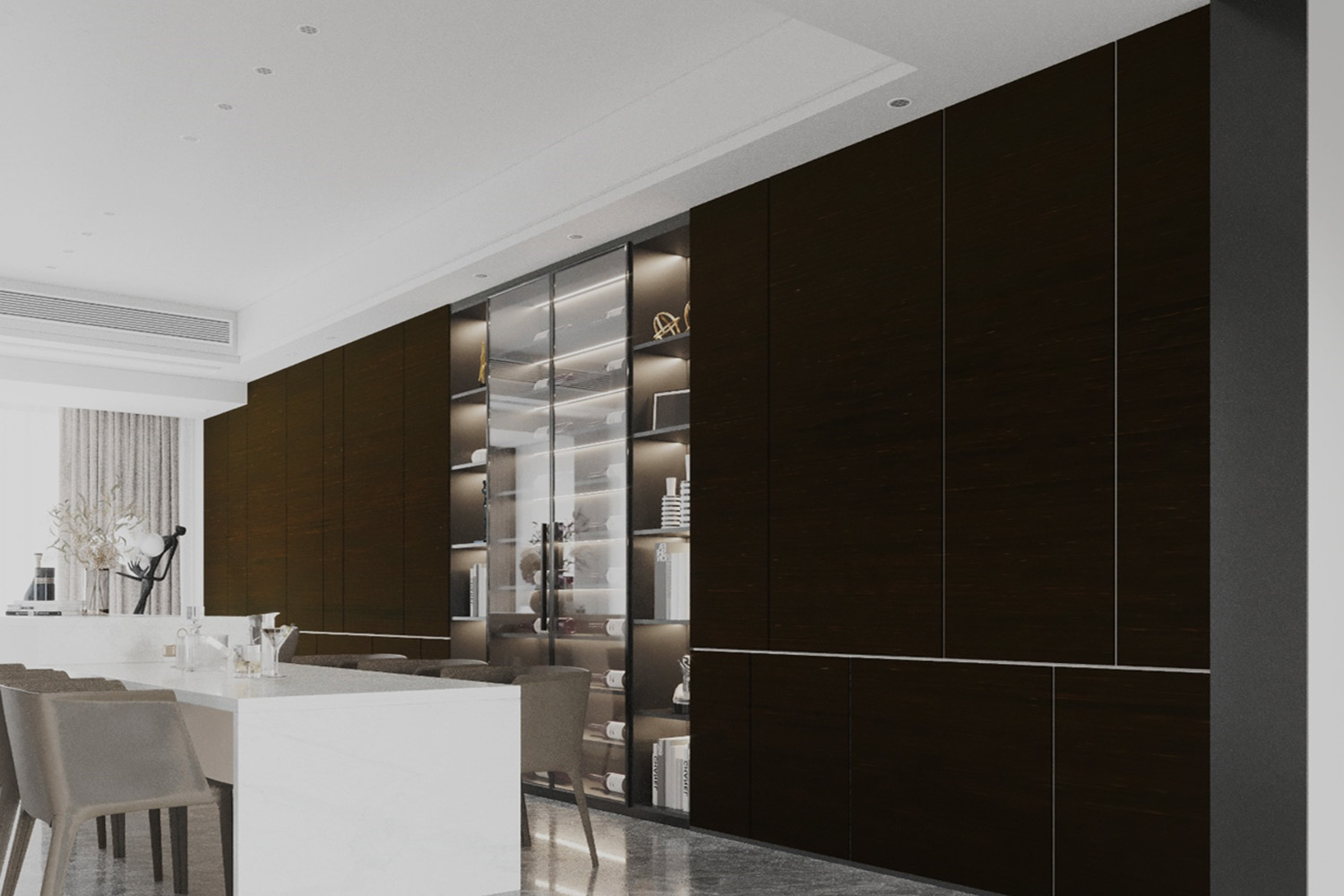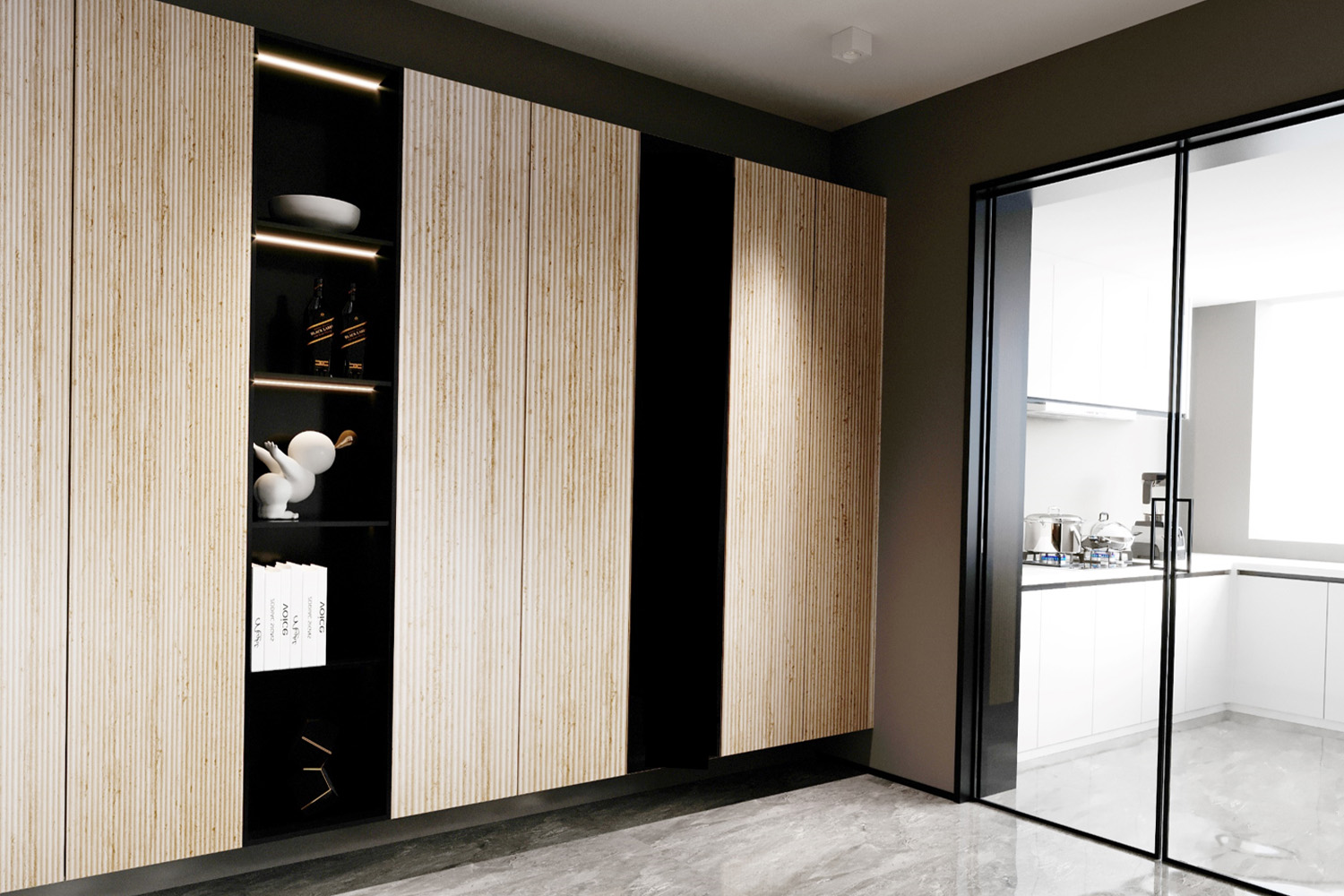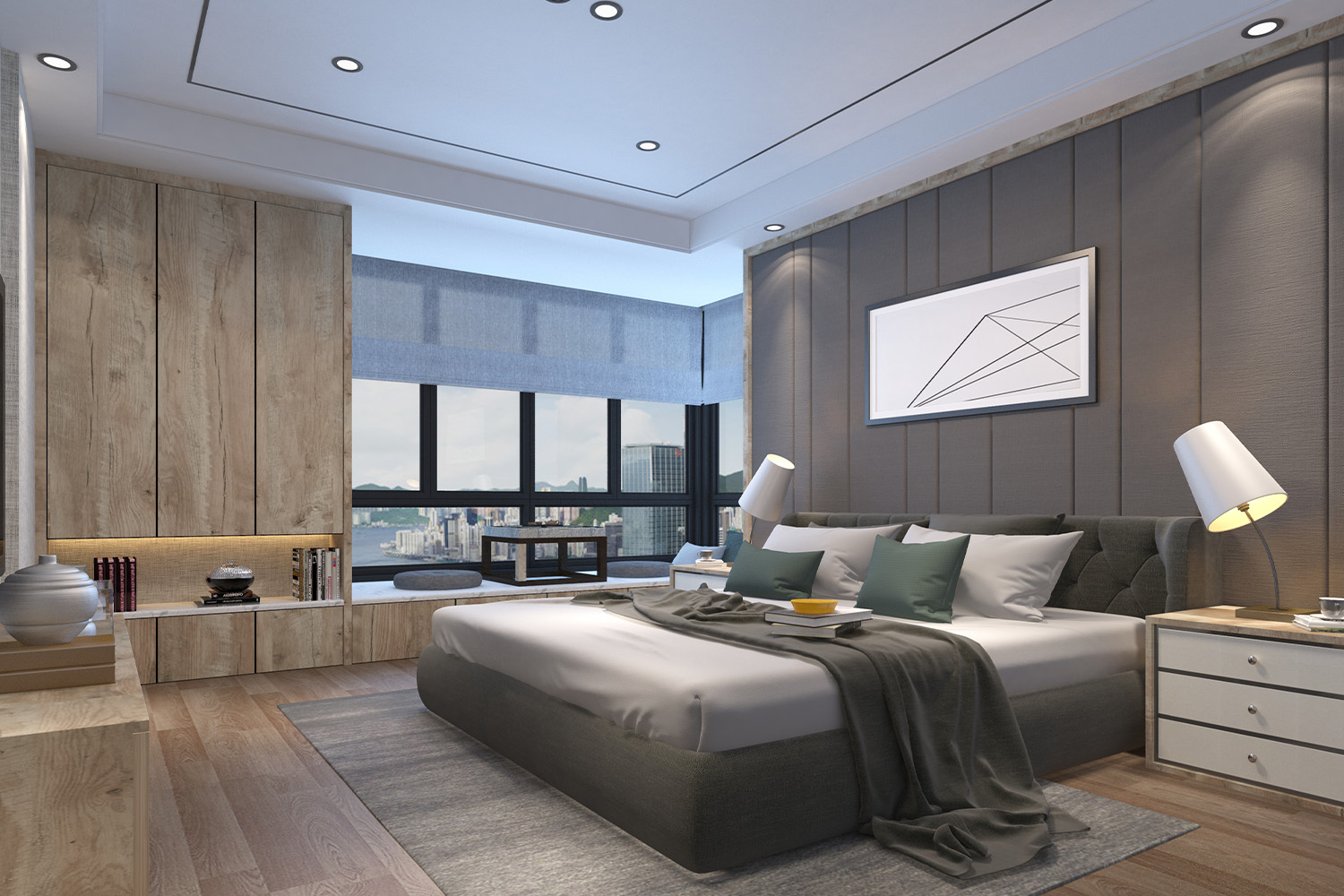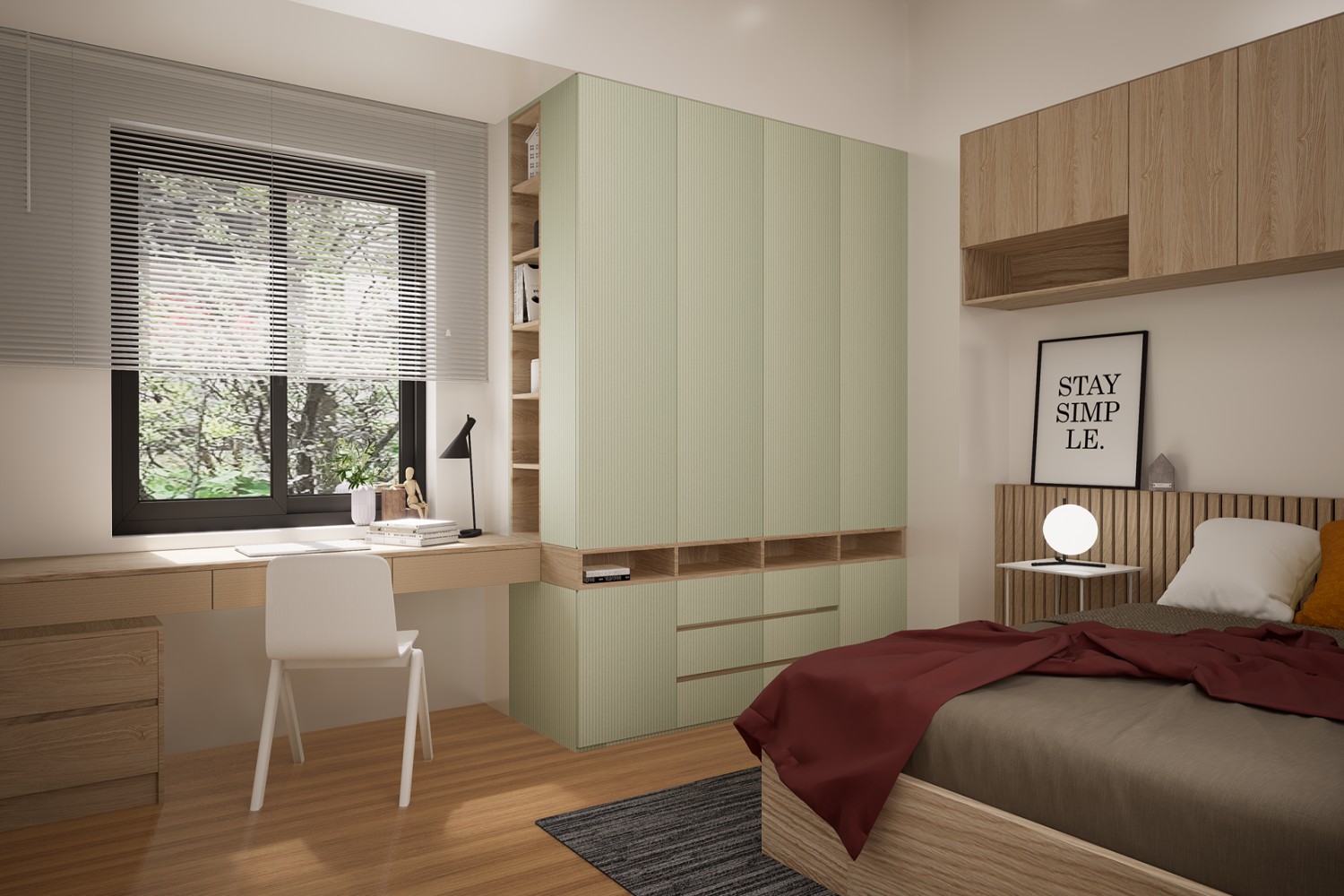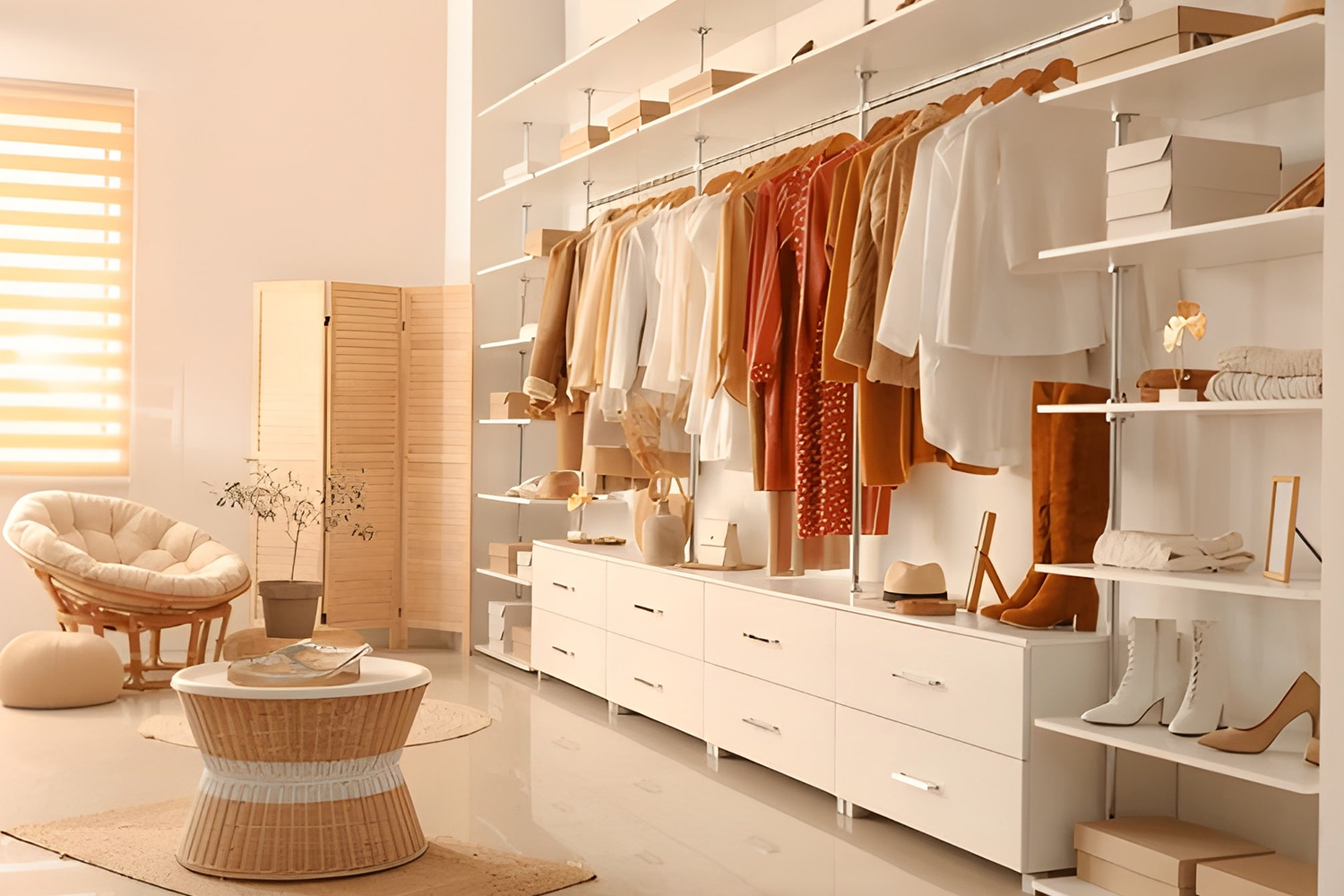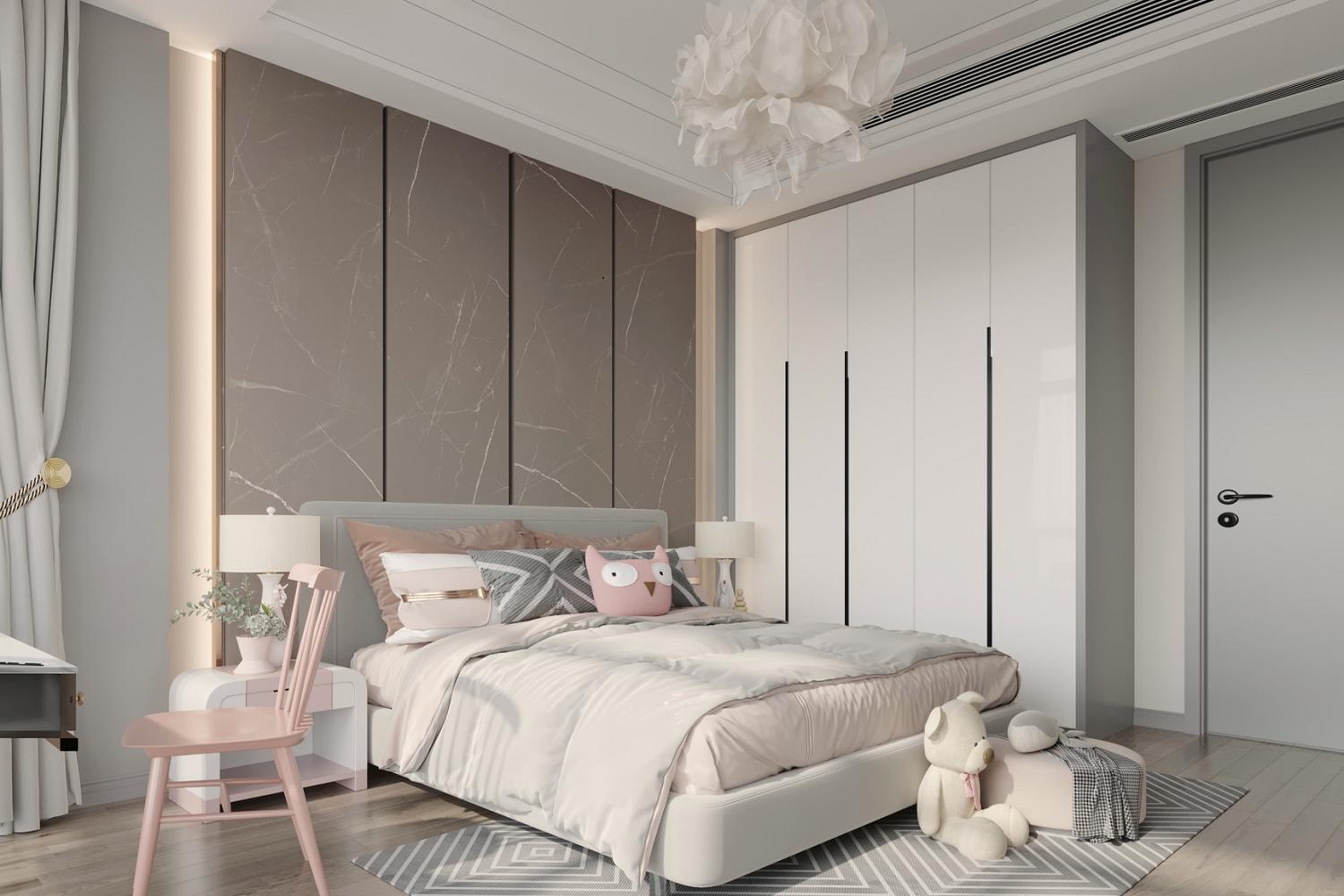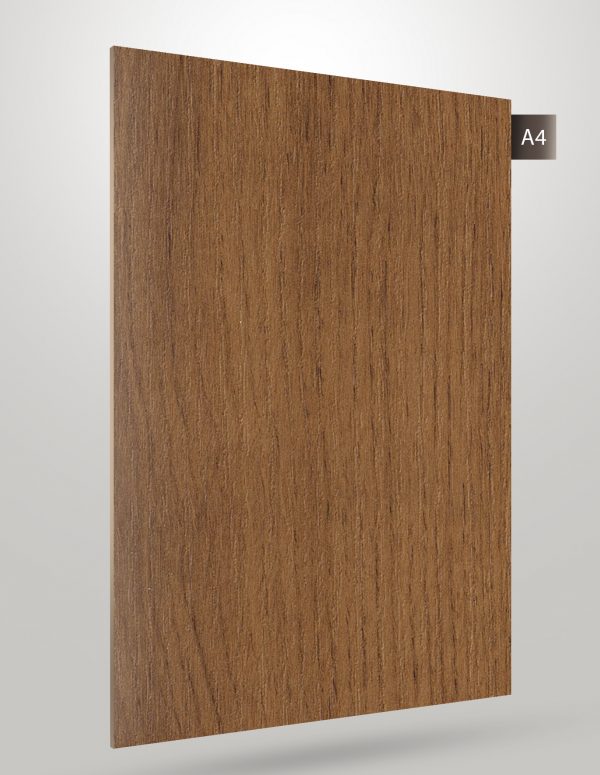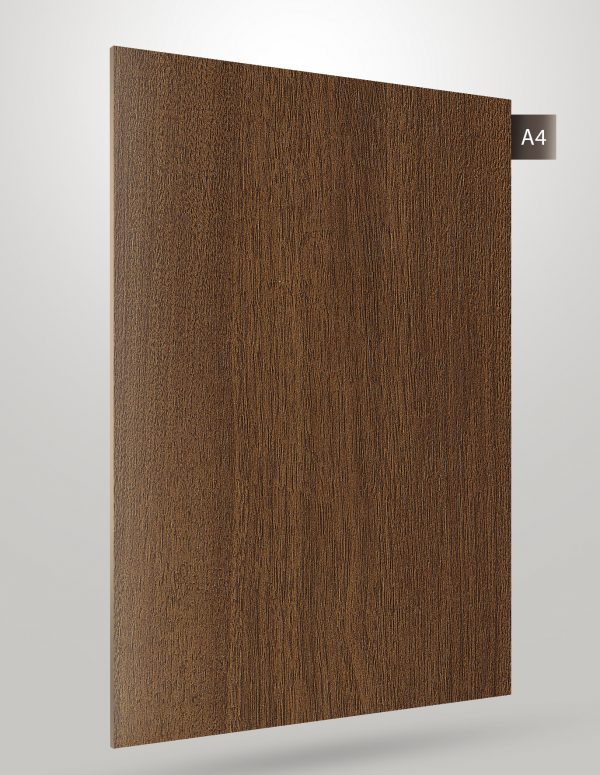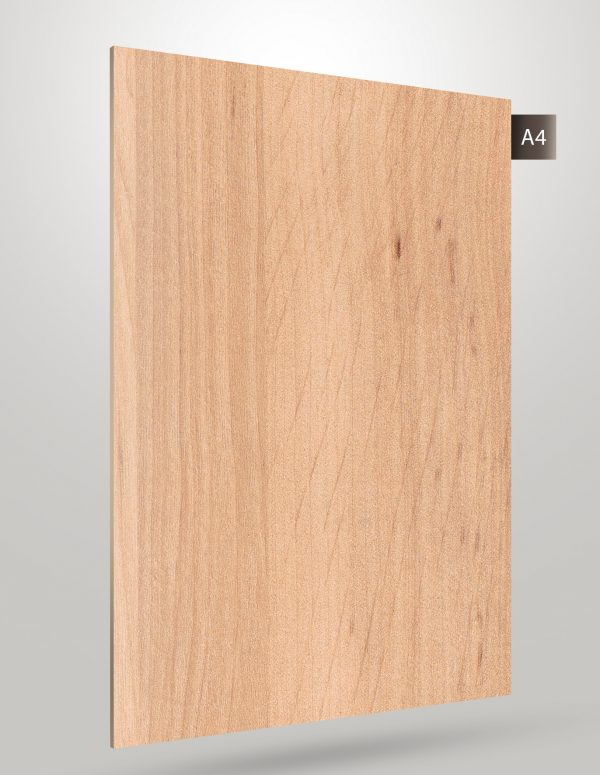
Wardrobe Design Concepts: The Ideal Combination of Sophisticated Looks and Everyday Use
A wardrobe is more than just storage for your clothing; a well-designed wardrobe will improve the overall aesthetic of your bedroom and bring order to your surroundings! There are so many options when it comes to size, layout, finishing details (like handles), and laminate textures that it can be challenging to know where to start. However, if you know what you are looking for, you can create a stylish wardrobe that is highly functional and enhances the overall style of your bedroom.
Interior design trends lean toward innovative storage options, earthy textures, and sleek finishes. Royale Touche has successfully delivered these ideas through their laminate collections, which include Super Matt, Crystal, Fluted, Textured, and Wardrobe Laminates — improving the design of your bedroom wardrobe design while also providing durability.
We will look at some of the best wardrobe design ideas we have created, with laminate selections, to help you determine the best look for your home.
Related Categories
1. Sleek Brown Wardrobe (Handles Are Used as Accents) With a Modern and Minimalist Wardrobe Design
The modern Indian bedroom sometimes requires a simpler look with channeled elegance. This wooden wardrobe design fits comfortably with Super Matt laminate in rich walnut or deep mocha lacquer. Super Matt laminate is a good choice, making the furniture resistant to everyday knocks and bumps and providing a depth of texture to a minimal space.
This is a good design to consider if you enjoy a simple yet elegant cupboard design for the bedroom. This could be designed as a standalone wardrobe or a built-in unit — a smooth finish will provide a clean line and works brilliantly with the smallest of wall wardrobe designs to the largest.
2. Elegant Dark Wood Wardrobe With Dapper Line and Good Storage Capability
Dark wood finishes have a slight regal character and are well paired with Textured or Horizontal Woodgrains laminates. These provide the texture seen in natural wood without the maintenance requirements of real wood. This bedroom wardrobe design has a classic warmth and is a smart storage option with drawers, shelves, and good use of accessory space.
This wardrobe has a good structure that will enable comprehensive internal wardrobe interior design and allow vertical space to be fully utilised, an extremely popular option for busy families wanting a lasting modern wardrobe design with rich aesthetics. This new wardrobe design has the earthy tones so often highlighted in both Scandinavian and Japandi themes. Used in conjunction with Wardrobe Laminates or Fluted laminates in light wood finishes such as oak, maple, or beige ash, this wardrobe delivers a soothing tone to the bedroom.
Wardrobes are a great option where the spaces are tight and light colours will reflect light and give the impression of space something that is vital for compact sliding wardrobe design installations. Beige tones are trending. This wardrobe style uses smooth-faced panels in Solid Colours or Super Matt laminates in soft creams or taupes. These tones give a feeling of sophistication, and pairing them with warm lighting will elevate the bedroom into something else.3. Modern Light Brown Wardrobe With Interesting Textured Panels
4. Smart Beige Wardrobe With Smooth-Faced Panels and Complete Lighting
This works best for a spacious master bedroom wardrobe design, especially when the wardrobe stretches across the whole wall. The practicality of its ease of cleanliness and organisation certainly appeals to many, proving that this wardrobe design type is practical as well as luxurious.
5. Elegant and Modern Wardrobe Design: The Best of Form and Function
This wardrobe blends all elements of a modern wardrobe design, including two-tone finishes, push-on drawers, and a modular interior. Crystal Matty laminates have a polished look, while Textured laminates add diversity to wardrobe shutters. The contrasting materials result in the wardrobe being both good-looking and functional.
This suits many wardrobe design ideas which contain open storage, pull-outs, and an integrated dressing area, an excellent choice for homeowners searching for the best wardrobe design to provide modern style and sensible use.
6. Modern White and Wood Wardrobe With a Contemporary Two-Tone Finish
Two-tone wardrobes are the rising trend for many urban homes at the moment. The use of white Crystal laminates on the upper panels and natural Textured woodgrain on the lower half creates symmetry between traditional and modern style.
This style is a fantastic choice for designing a sliding wardrobe design in a smaller bedroom, particularly in a modern colour scheme that maintains brightness without compromising warmth. It also benefits internal wardrobe interiors by enabling contrast between storage zones.
7. Grey Wardrobe With Timeless Detailing
Grey wardrobes are timeless and more versatile than you’d think. Finishing your wardrobe in Super Matt or Solid Colours laminates in slate, dove, or charcoal adds sophistication without overpowering the room.
This wooden wardrobe design is popular in both main suites and compact bedrooms. The selected laminate gives a premium look, especially when combined with good styling. This design works best for those seeking long-lasting and elegant wardrobe laminate design options.
8. Minimalist Brown Wood Wardrobe With Simple and Sleek Lines
Minimalist wardrobes typically evoke the idea of “less is more”. Fluted laminates or Wardrobe Laminates in warm walnut or coffee tones give a clean, structured look. This design is highly uncomplicated, with smooth finishes and quiet elegance.
It fits perfectly inside a simple cupboard design and is often used in built-in wall wardrobe design solutions for studio apartments and compact homes — making it a staple cupboard design for bedroom needs.
9. Expansive White Wardrobe With Elegant Finish and Ample Shelves
White wardrobes remain the most timeless and versatile selections in the wardrobe design family. Laminates like Crystal or High Gloss will give your wardrobe bright, reflective surfaces that open up rooms.
White wardrobes are perfect for families or couples who desire ample storage with custom wardrobe interiors that include shoe racks, jewellery organisers, or folding mirrors all inside an airy, elegant layout.
10. Contemporary Black Wardrobe With Glossy Surfaces and Modern Lines
Black wardrobes are bold and contemporary pieces. Crystal Z and High Gloss laminates offer a mirror-like surface perfect for high-end bedrooms. These designs pair well with metallic hardware in gold or silver.
A modern wardrobe design like this creates a sleek, dramatic statement and is especially popular in urban luxury homes that favour a monochrome theme. It’s a confident wardrobe design for bold personalities.
11. Light Wood Wardrobe Design With Simple Shape and Clean Lines
For a softer, more natural look, light wood finishes always work. Laminates from the Wardrobe Laminates deliver a calm, organic finish to the space.
This cupboard design works well in shared bedrooms and harmonises beautifully with natural fabrics and neutral wall paint. It’s also one of the most versatile wardrobe laminate design styles to complement various home aesthetics.
12. Charming Grey Wardrobe With Decorative Elements and Practical Design
For those who want both beauty and utility, this wardrobe is ideal. Fluted panels add dimension, while Super Matt greys create an understated, soft base.
This design suits both hinged and sliding wardrobe design types and is commonly used in themed bedrooms with calming tones. It’s a practical yet artistic wardrobe design for homeowners who appreciate detail and balance.
Choose the Right Wardrobe Design for Your Home
Choosing the perfect wardrobe design comes down to three things: layout, finish, and lifestyle. Whether you prefer a two-tone cupboard design, a natural Textured wooden wardrobe design, or a bold, glossy piece for your master bedroom wardrobe design, Royale Touche laminates provide endless possibilities.
From subtle Super Matt laminates for serene interiors to striking Crystal finishes for modern flair, and from warm Fluted designs to soft Solid Colours, you can match your style with long-lasting performance.
Your wardrobe should reflect your needs and taste while offering lasting practicality. With the right design and laminate combination, your wardrobe becomes more than just storage — it becomes a part of your home’s story.
Related Products
Frequently Asked Questions
1. What are the advantages of a wooden wardrobe design?
A wooden wardrobe design is customizable and adds a touch of charm, elegance, and sophistication to any space. Additionally , wooden wardrobes are durable, versatile, and available in a range of finishes to match both modern and traditional interiors.
2. What are some popular wardrobe designs for bedrooms?
Some of the commonly selected wardrobe designs for bedrooms include sliding wardrobe designs for space efficiency and wall wardrobe design that maximize storage with style. Both designs cater to modern living, blending functionality with a visually appealing aesthetic.
3. What are the benefits of a sliding wardrobe design?
A sliding wardrobe design has a sleek look, is stylish and saves space. These new wardrobe designs are trendy and apt for all kinds of room decor! They also eliminate the need for door clearance, making them ideal for compact spaces while offering seamless storage
4. How do I create a wall wardrobe design?
Integrate wardrobe interiors in wall space, add vertical storage and maintain a clean, uncluttered appearance. Incorporating built-in shelves and concealed lighting can further enhance functionality while creating a modern look.
5. What is the best wardrobe design for a master bedroom?
For a master bedroom, the best wardrobe design is a perfect blend of sufficient storage with elegant finishes. Making use of a refined wardrobe laminate design helps complement the room’s decor. Opt for designs with mirrored panels or textured finishes to add depth and elevate the overall aesthetic of the space.
